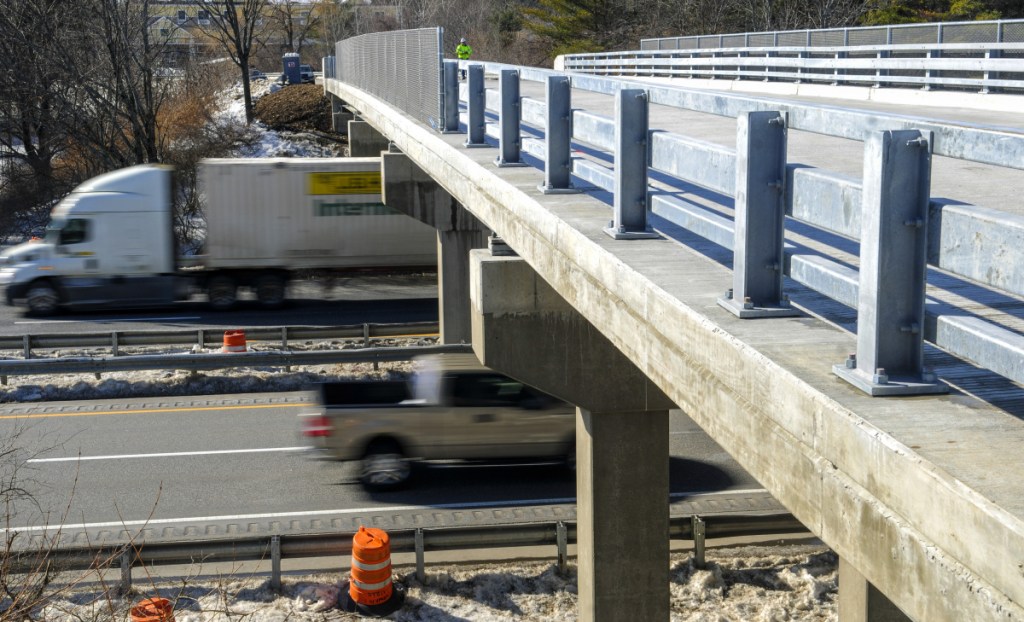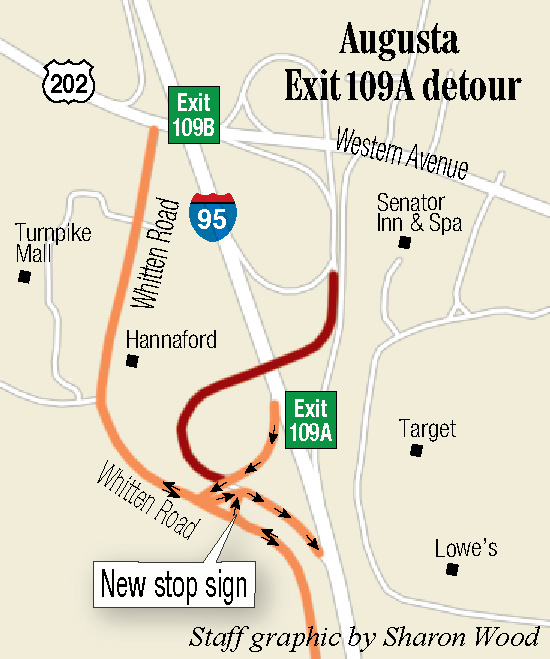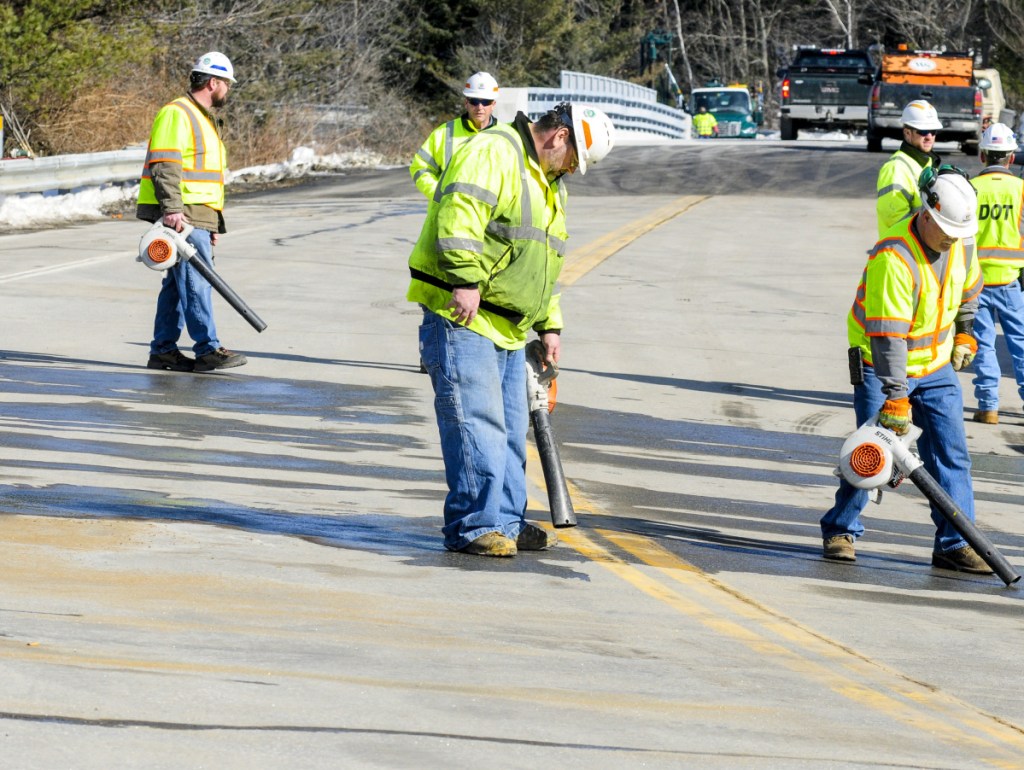AUGUSTA — A new overpass on Interstate 95 at Exit 109 is in place, paved and expected to reopen to traffic Thursday, ending months of detours at a key city crossroads.
That means a detour using Whitten Road to get on and off the Interstate at Exit 109A will close and traffic should resume its previous flow when the overpass reopens, which is expected to be late in the afternoon or early evening.
Work began in October on the emergency project to replace the overpass bridge, which authorities said was damaged when an unidentified — apparently tall and heavy — piece of equipment or a vehicle struck the overpass, damaging its steel beams.
The approximately $3 million project compressed what would normally be a roughly two-year process of designing and building a bridge into about three-and-a-half months of work, much of which took place amid winter’s freezing temperatures and snowy conditions.
“Bringing it from conception to completion, from the end of October to the middle of February, is a pretty amazing feat,” said Devin Anderson, project manager for the state Department of Transportation. “It takes a lot of people to make a project like this happen and come off without a hitch.”
The ramps for the overpass were paved Tuesday, when temperatures ranged from 10 to 20 degrees. Normally, those temperatures would be considered too cold to pave, at least using usual methods.
Pavement was put down Tuesday, however, under supervision of a transportation department paving expert who directed contractors to take special steps. Those steps included starting with asphalt that was as hot as possible, and putting it down 3 inches at a time instead of the more standard 1.5 inches at a time, to help retain heat.
Auburn Asphalt opened a paving plant, which would otherwise be closed over the winter, in Auburn to provide 320 tons of asphalt needed for the job.
Anderson said the asphalt put down in such cold temperatures likely won’t last as long as the 15 years most paving is expected to last. But he said it only really needs to last until summer brings warmer temperatures, when crews will come back to put down a final coat of regular pavement and finish off the job.
The new bridge, at 15 feet, 6 inches above the highway, was raised from the previous bridge’s 14 feet, 5 inches, to make it the same height as other bridges nearby, and to help prevent it from being struck again.
Ted Talbot, spokesman for the state transportation department, said no one came forward to take responsibility for hitting and damaging the bridge, nor did anyone offer information about what may have happened to it. The old bridge, built in 1959, was lower than bridges built now.
“I believe it was the lowest bridge in that general area, but not necessarily the lowest on the Interstate,” Anderson said.
Some people have suggested not replacing the bridge, and just making the temporary detour using Whitten Road the permanent way of getting on and off the highway at that location.
Talbot said neither the detour, nor Whitten Road, were built to handle the traffic volume nor types of vehicles which come with Interstate traffic on anything other than a temporary basis, and the state did not consider making the temporary detour permanent instead of replacing the bridge.
“We appreciate the public’s patience through the project, there have been some traffic challenges from time to time,” Talbot said. “We’re pleased to bring this back to the regular traffic pattern for everyone.”
Wyman and Simpson, of Richmond, was the contractor on the project.
Keith Edwards — 621-5647
Send questions/comments to the editors.






